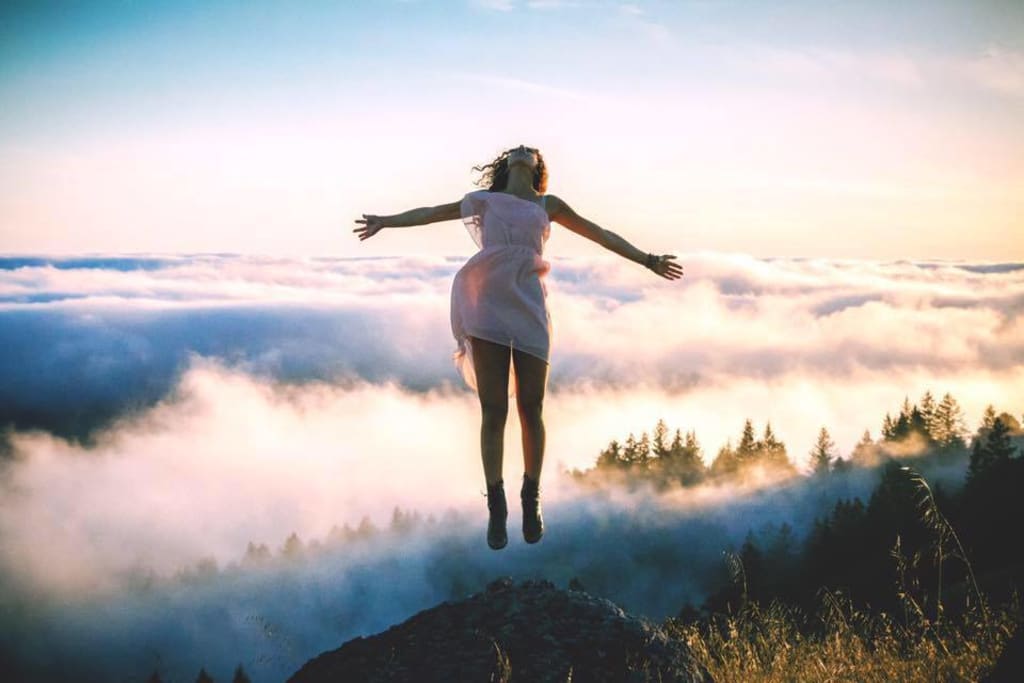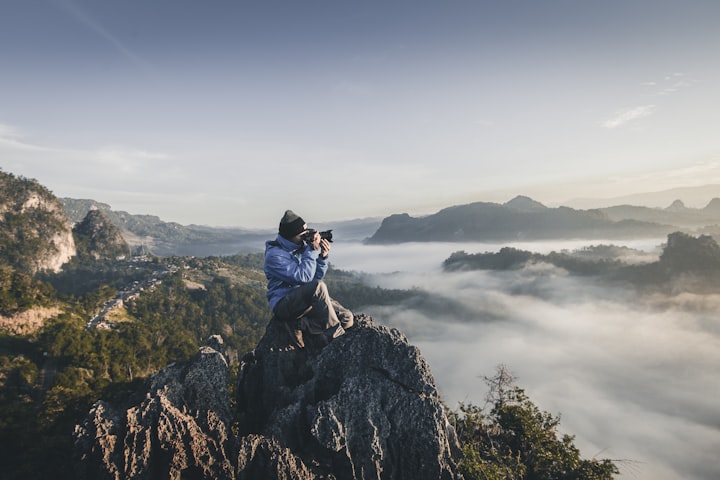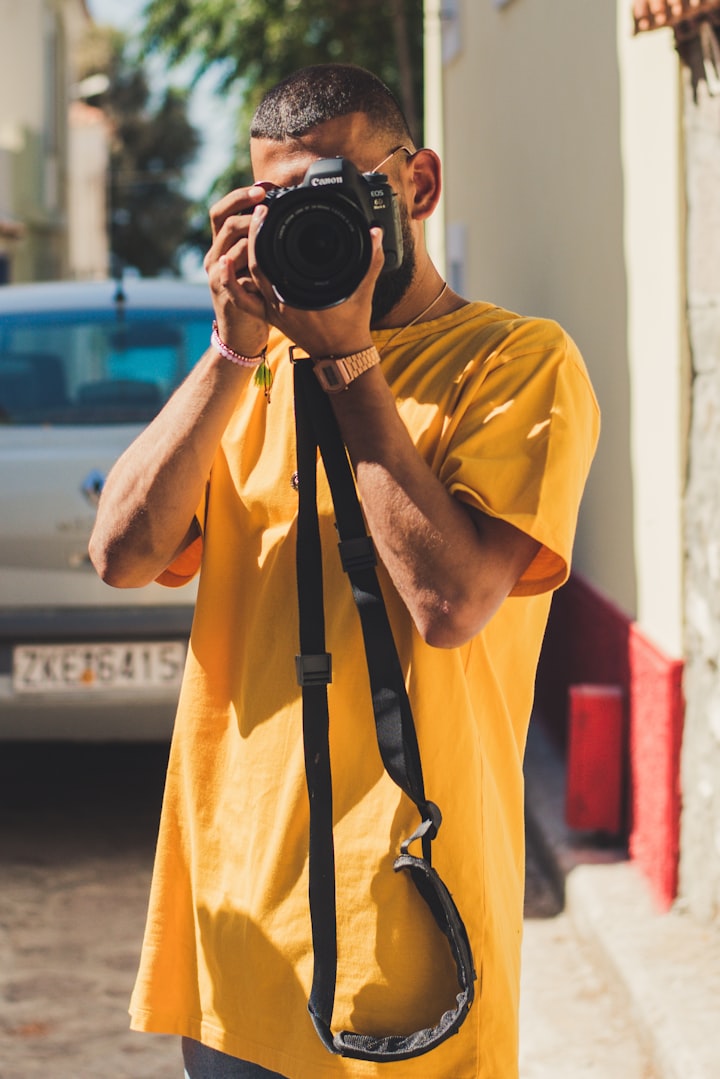The Incredible Photograph
A guide to creating photos that last.

I remember, when I was young, seeing photographs and being amazed by them. Whether it was printed photos or creative ones I found on google, Flickr, or Photobucket. But nowadays we have such an extreme influx of content that our standards for a great photograph have never been higher. Instagram single handedly has made photography an almost universal skill set that every human who actively participates on the platform feels compelled to learn and improve on. During these times of extreme influx and content overload, how can us photographers stand out and continue to create incredible photographs? How can we continue to produce photographs that live on longer than the milliseconds they linger in front of your followers while deciding if they’re going to double tap or not? As a serious photographer for the past 6 years and a more passive photographer for even longer, I have watched the transformation happen and here’s what I’ve learned about creating an incredible photograph:
Creation Over Imitation:
The first important principle is creation over imitation. Ask anyone you know to go to their saved folders on Instagram and I would argue that nearly everyone has a folder titled “Inspo.” The exact name may vary from “Creative Inspo.” to “Photo Inspiration.” But nonetheless most people are searching day and night for the next person to imitate. If you truly wish to create photographs that make an impact, here’s my best advice: Take time off social media and find creative inspiration in your own life. Study your day to day life. What you do, how you feel, what you think about, what happens to you, the kinds of people you interact with, and ask yourself “How could I portray these into their own photographs that accurately depicts them?” If you are a more conceptual artist than you might magnify your feelings and thoughts into a compositional masterpiece. If you are a more lifestyle photographer you could turn your daily breakfast into a fun photoshoot. Adding, subtracting, and changing things to best depict the internal experience for your “breakfast time.” Draw inspiration from your own life, the people around you, the things that happen, and, most importantly, what’s happening within you. Only when you begin to be a creator and not an imitator, can you begin to create photographs worth remembering.
Feeling
The second principle in creating an incredible photograph is feeling. The single most important factor in determining whether you personally think a photograph is incredible or not is the feeling it evokes within you. The stronger the feeling it evokes, the more incredible the photo. To add to that: the more people who feel evoked with emotions also adds value. Creating a photo, showing 1000 people and only 1 person connecting with it doesn’t mean it’s not incredible, but to mark a photo as truly incredible, it is important that many people also feel affected by it and therefore enabling people to talk to others about it. With no one to converse with, the less your work unites people and has the capacity to develop deep relationships with its viewers.
Here are the strongest emotions you can appeal to when trying to evoke an emotional response:
Desire: Instagram is incredibly saturated with this kind of content. When we see a photo we like, it is commonly because it evokes the emotion of desire. We like it because deep down we are thinking “I wish I had that.” Some examples are:
I wish I could go there.
I wish I could eat food like that.
I wish I had a body like that.
I wish I had a boyfriend or girlfriend or boyfriend that looked like that.
I wish I could create art like that.
These are examples of desires we see in our feeds every day that we like and desires we can cater to in order to evoke emotion.

Shock: These are the photos you see where something surprising is happening. Something out of the ordinary. Commonly we feel this response when we see someone in the photograph, or the photographer themselves, taking a sizable risk. From standing at the edge of a cliff to the Instagram model flashing cars on the road. These things are out of the ordinary and require the subject to take some form of sizable risk in order to evoke the emotion of shock.

Admiration: If you’ve ever seen a photo of a friend who just beat cancer or received an outstanding award, then you know the feeling of admiration. Typically this feeling is evoked by seeing a subject conquer over a worthy challenge. This is commonly something that can’t be staged and is a repercussion of photojournalism.
Wonder: The sheer virality of the whole “is the dress blue/black? Or white/gold?” debacle is a clear example of wonder. How the actual hell is this happening? Wonder is a great emotion if you can cater to it. Doing something that gets people saying to themselves “how did they do that?”

Social Acceptance: Another big feeling that can be evoked is social acceptance. A great example of this is the “world record egg.” It got everybody involved. You feel “part of the gang” by participating. Much of Instagram runs off this emotion. When you see someone who you like engaging on a post, you might feel compelled to like it too. Another part of this is when you post “relatable content.” When the photograph you’re seeing, you deeply feel like you relate too. You no longer feel alone when you see these photographs. Therefore, social acceptance is another feeling you can evoke.

These next two are negative and I would HIGHLY recommend not catering to these emotions. They create short term attention but in the long term, people will likely avoid you and your work because it generally makes them feel bad. Anyways, the next two are:
Fear: These photographs are the ones you see where something is burning down, people are sick, or you see the faces of devastated people. These photos create fear. The make you afraid of the future.
Anger: This is a big one on social media that nearly always leads to ruin. It commonly comes in the form of finger pointing and victimization. These photos criticize people or groups. Yes these will get you attention but people eventually learn to avoid those you criticize and create anger.
This completes the list of major emotions you can evoke. When planning your photoshoots, it would behoove you to try and aim to evoke one of these emotions if you wish to create a truly incredible photograph.
Composition:
This is the final principle of what I personally believe makes an incredible photograph. When I say composition here, this is my definition:
The tones, colors, subjects, environment, and details of the photograph, and how these elements are used/positioned in the photograph.
In correspondence with the emotion you wish to evoke, in order to further accentuate it, it is important that all the aspects of the photo work together. With that you will need to understand thoroughly three topics:
Color Theory:
Color theory is the study of colors. Understanding how colors and tones can work together and the emotions they evoke in the viewer. Working in harmony with the rules of color theory will take you a long way in the success of a great photograph.

Styling:
Styling in this case could be anything from the outfit on the subject, the props in the photo, or picking the perfect environment. Studying style will take you a long way on your journey to creating an incredible photograph. It is picking the right outfit that looks the vibe you’re going for, picking props that match, and choosing a complimentary environment.
Structure:
Structure means structural composition. If you have heard of the rule of thirds, this is where that applies. Cathedrals are made beautiful because they follow perfect sets of proportions. There are proportions in nature we will always find naturally beautiful. If you really want to create the “perfect” photograph, your best bet is to study Golden Mean Proportions. These are seen as perfect proportions and are found everywhere in nature. The exact definition being: the Golden Ratio (also known as the Golden Section, Golden Mean, Divine Proportion or Greek letter Phi) exists when a line is divided into two parts and the longer part (a) divided by the smaller part (b) is equal to the sum of (a) + (b) divided by (a), which both equal 1.618.

Learning to incorporate that in your photos will take you a long way. Here are some examples:


Next rules you should study in understanding structural composition are the following:
Lighting: Lighting is an obvious make or break for a photo. Making sure that the lighting is appropriate for the idea is crucial.

Lines: Lines in the photograph are what guides our eye through the photo. They are the path in which our eye travels when analyzing it. Using lines appropriately will lead to the ultimate storytelling in an incredible photograph.

The Rule of Thirds: This one is obvious. If you have ever seen those lines on a photo that divides the photo into 9 equal squares, that’s the rule of thirds lines. It is said by placing important subjects along those lines or on the crossing sections, then it will add more power to the photograph.

Rule of Odds: This rule is based on the principle that subjects and objects in the photograph should come in uneven numbers because it is said to be more “attractive” to the eye.

Rule of Rhythm: This rule is when subjects and themes in the photograph are prevalent throughout the entirety of the photo. In this photo, the rhythm is in the broken road:

(Bonus) Body Language: This one's for when your subject is a person. Understanding and studying body language can be powerful and can really take your concept to the next level in communicating your vision accurately.

It would behoove you to do some serious study of these subjects and the effects they have on the viewer. You may argue that editing is important in the creation of a great photograph and that is true. Editing is important. But I have seen some photos that are incredible before editing and seen editing ruin the photo. So I am going to omit editing from this article.
In creating an incredible photograph, these are the principles: Creation, Feeling, and Composition. Learning to use them in harmony with one another is what will cause a person to see your photos and feel something, share it with people, and, ultimately, cause your photograph to live on. Existing beyond the limitations of the Instagram box.
I hope this article helps you to produce some incredible photographs and I look forward to your success!
Warmly,
Nathaniel






Comments
There are no comments for this story
Be the first to respond and start the conversation.